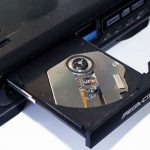At the moment my PC pumps out a serious amount of noise, which is fast becoming annoying. Ok, I have a lot of kit in there, most of it I could do with out. What I would like to do is reduce this noise to a minimum. The problem is that unless I go to an alternate cooling system, I will still require fans which are the source of the noise. If I have quiet fans, then the components get hotter and the lifespan decreases. If I goto water cooling, I have a big outlay on the initial setup, and still require a radiator and fan to vent the heat. Hence a low power system is required that required no active cooling.
I have been working with computers for a long time now, but it was not until I moved home from University in December 2002 that I realised how noisy they had become. I now have a PC in my bedroom that kicks out a lot of noise, even using silent components. In addition to this, I have been looking at the Mini-ITX mods and projects for a long time, and patiently waiting for the Nano-ITX to be realised. Anyway, summer 2004 I finally got bored of waiting and having all that noise that I thought I should finally do something about it.
What I wanted was a computer that would be silent, in the true meaning of “silent”, that I could use to check my emails and produce all of my material for my job (teaching) on. I also wanted this to be cheap, especially if there was a chance I could seriously mess it up. Therefore I went with the VIA EPIA 5000 motherboard, purchased from Mini-ITX.com for £74.03.
The last time I had touched Linux was in the first year of my degree when Linux kindly wiped my hard disk, losing several months of course work! Although most of my work is Windows based, I am using Linux more and more. As such I would like a small box (CD case size) that can run Linux and possibly Windows (although not necessarily). I have come across several little Linux boxes, most notably Open Brick. However, there are other small (Mini-ITX and Nano-ITX) motherboards (see Mini-ITX and EPIA Center), which I could also use.


